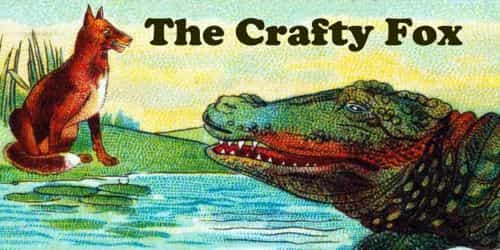Cotton:
Cotton is the world’s most used fibre. It is cool, soft, comfortable and the principal clothing fibre of the world. Its production is one of the major factors in the world’s prosperity and economic stability. In the textiles industry more than 78% of the printed goods are of cotton fabric and it has been used for the apparel purpose since centuries. It forms the background of the world textile trades. Printing on these fabric will produce a variety of designs attractively andeconomically.
The most commonly used thickeners for printing one cotton fabric is sodium alginate, but in view of its high price, partly substituting guar gum represents an acceptable alternative. Therefore, an attempt was made to print cotton fabric with sodium alginate and guar gum and compare its property and cost to the samples printed with sodium alginate.
Methodology
White cotton fabric having counts of 100 ends and 100 picks with the weight of 100 gm/m2 was selected for the study. The scouring of the fabric was done by 25 per cent soap solution at 100ºC for 1 hour. The dye used for the study was dichlorotriazinyl reactive dye. (Brill red-M). The paste of sodium alginate and guar gum were prepared separately by sprinkling the dry powder over the cold water under constant stirring and is allowed to stand for few hours to attain full swelling of the gum particles. The details of paste prepared in various concentrations are given in Table1.
After the preparation of the thickening paste, the scoured fabric was printed with the help of screen using following recipe (Kale, 1976).
30 Parts Procion colour
30 Parts Urea
230 Parts Warm Water (120ºF-140ºF)
650 Parts Thickening Agent
60 Parts Sodium Bicarbonate
1000 Parts
Note: 10% solution of sodium bicarbonate is prepared and 60 parts is added to the printing paste just before printing.
The printing paste was prepared by mixing the dye stuff with urea before adding cold water. The mixture was heated to not more than 70ºC (160ºC) to dissolve the dye and urea. The solution obtained is then stirred into the thickening and the required amount is added to the cold printing paste. Then the paste was stirred properly and it was applied to the fabric through screen. After this the printed samples were dried and steamed for 45 minutes at 95ºC in steam ager.
Then the printed samples were subjected to visual assessment, computer colour matching bending length, crease recovery angle and cost calculation for optimisation of suitable concentration of thickening agent.
Results
Visual assessment of the printed cotton sample:
Printed cotton sample were adjudge by the panel of 30 judges comprises of textile experts and research scholars for various attributes viz uniformity of colour, sharpness of outlines, whiteness of ground, overall appearance and it was observed that 8 per cent concentration of sodium alginate scored the maximum marks (384) when compared with the other ratio of sodium alginate. The sample printed with 3 per cent concentration of guar gum scored 2nd highest marks (352) whereas 2 per cent concentration and 4 per cent concentration scored 180 and 185 marks (Table 2).
Computer Colour Matching (Spectra Scan):
For the computer colour matching the sample printed with 6 per cent concentration of sodium alginate was taken as the standard sample and the other printed samples were compared with the standard sample. Result are presented in Table 3 which gives the DL value of the printed sample. It was found that the sample printed with the 8% concentration of sodium alginate was more closer to the standard sample with the DL* value –0.715 while the 3% concentration of guar gum had the DL value of –2.152.
Determination of the fabric stiffness:
Printing with sodium alginate causes a slight increase in the fabric stiffness even when sodium alginate was used as the thickening agent whereas guar gum causes slight more increase in the fabric stiffness when compared with the unprinted samples. (Table 4).
The statistical analysis reveals that there is insignificant (p<0.05) difference between the stiffness value of the sample printed with sodium alginate and guar gum but there was significance difference (p>0.05) in the stiffness value of the samples printed with various concentration of thickening agent.
Sonja S.I (2000), reported that printing with reactive dye causes a slight increase in the fabric stiffness even when sodium alginate was used as thickening agent.
Crease Recovery Angle:
There was slight decrease in the crease recovery angle when the sample was printed with sodium alginate. Printing with guar gum causes slight more decrease in the creases recovery angle when compared with the unprinted sample.
Statistical analysis of the data indicate that the difference in the value of crease recovery angle was insignificant (p<0.05) when the samples was printed with sodium alginate and Guar Gum while there was significant (p>0.05) when the samples were printed with various concentration of thickening agents.
Cost Calculation:
Cost was calculated for printing one metre of silk fabric by including the cost of dye, chemicals, thickeners, and excluding the labour charges. It was calculated that the fabric printed with 8 per cent concentration of sodium alginate cost Rs 22.56/- whereas printing with guar gum costs Rs 14.46/- which is about Rs 8/- less when compared with printing cost of fabric printed sodium alginate.
Selection of best concentration of the thickening agents for printing cotton fabric with reactive dye:
On the basis of various physical test of the printed sample, it is concluded that the cotton sample printed with 8 per cent concentration of sodium alginate scored the highest marks in visual evaluation, but incures more printing cost. Whereas the sample printed with the 3 per cent guar gum showed good printing results with low cost. When the results of computer colour matching were observed it was found that the results were comparable to that of sample printed with only sodium alginate (8 per cent concentration). Hence in view of price, 3 per cent concentration of guar gum is considered suitable for printing cotton fabrics. The samples were printed with the above standardised concentration of thickening agent and were tested for various physical properties, viz, tensile strength, thickness and colour fastness tests.
It was observed that there was a slight decrease in tensile strength and slight increase in the thickness of printed sample when compared to the unprinted sample. The test of colour fastness reveals that the blend of sodium alginate and guar gum in the ratio 80:20 had the excellent fastness properties towards washing, light, crocking and perspiration (Table 5)
Narker (1991), reported that reactive dyes have high tactical value, brilliancy and good allround fastness properties, particularly to rubbing (crocking) and washing.
Conclusion
All the results obtained clearly indicate that the cotton samples prepared with 3 per cent concentration of guar gum produces good quality print as that of the sample printed with 8 per cent concentration of sodium alginate. Printing cost of the former sample was also low, but guar gum slightly stiffens the fabric more when compared with pure sodium alginate. Thus, from the present study it is concluded that the 3 per cent concentration of Guar Gum will be the better alternative for large-scale printing in home furnishing industries.
















